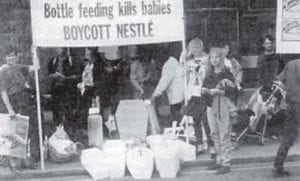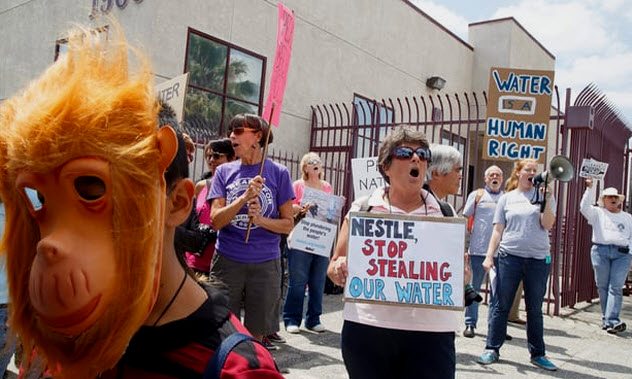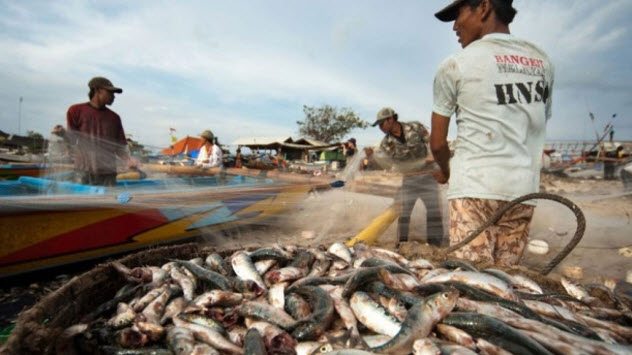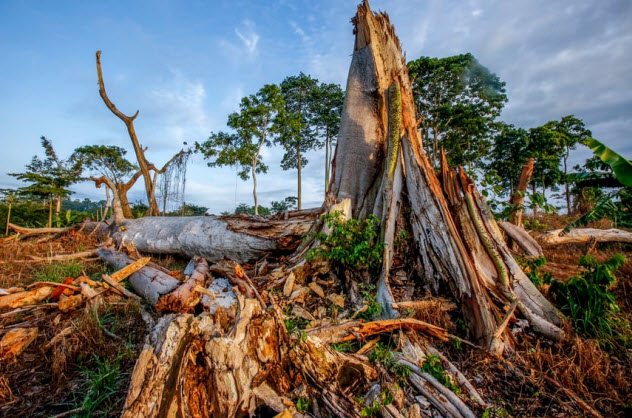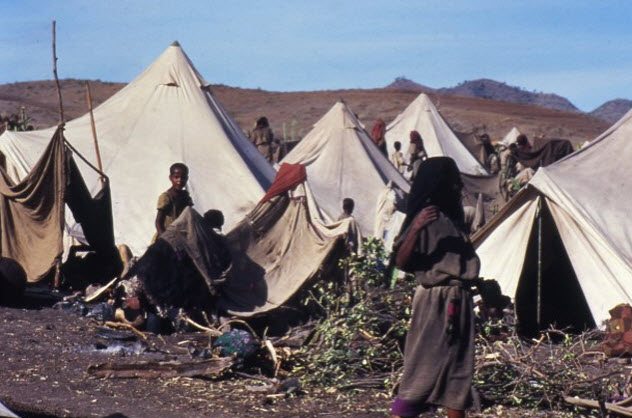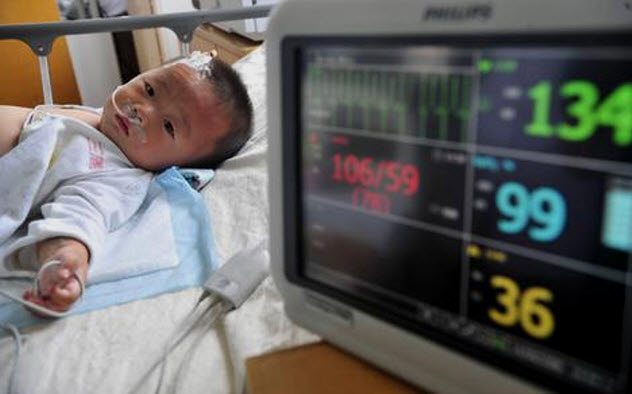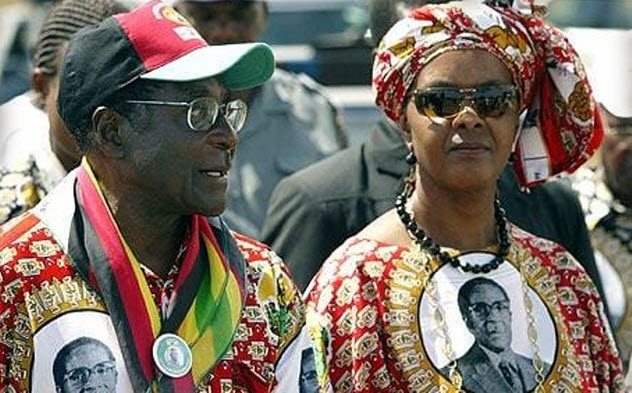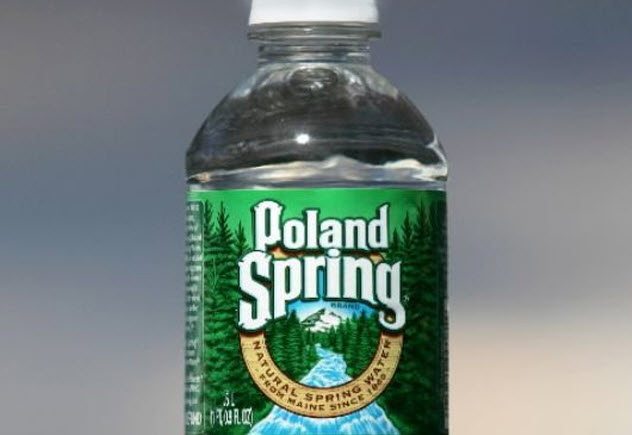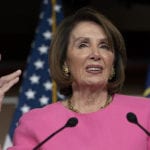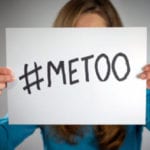SEE ALSO: 10 Fascinating Facts About the World of Chocolate Here, we document 10 of the most notorious scandals involving Nestlé and encourage you to dig deeper. Public backlash has resulted in Nestlé changing its stance on certain issues over the years. Don’t turn a blind eye. Let’s continue poking Nestlé to be better.
10 Baby Formula Boycott
Natural breastfeeding isn’t always possible for mothers. However, studies show that it is preferable to formula for a baby’s development. Therefore, it would be incredibly unethical for a company to intentionally mislead or misdirect customers in a way that would cause them not to breastfeed. According to some critics, Nestlé is strongly believed to have done just that during a campaign that has stretched over several decades. The most prominent Nestlé boycott was launched in 1977 to combat what was perceived as “aggressive marketing” of milk formulas in less economically developed countries.[1] There, milk formula samples had been given to new mothers while still in the hospital, and usage of the formula was believed to have been encouraged by financially incentivized medical practitioners. By the time the sample has run out, the mother’s lactation had been interrupted to such an extent that the mother had to rely on the substitute. The product’s nutritional content and instructions are often incomprehensible to the consumer. For instance, in 1999, comedian and TV journalist Mark Thomas brought to wider Western attention that Nestlé baby milk tins sold in Mozambique were labeled solely in English. Portuguese is the country’s official language. However, it’s associated with the academic elite. The rest of the population speaks over 60 different dialects of Bantu languages. English is rarely used except within the tourism industry. So, mothers had no idea what they’re giving their babies or how much to give them. Instead, these women have to rely on the often-spotty, self-serving advice of doctors and nurses. This also leads to hygiene problems. Not only are mothers in economically deprived areas less likely to know the correct way to sterilize bottles, but they’re also less likely to have the appropriate cooking equipment. Diarrhea is a common result. Sources of medicine and good nutrition aren’t always available. As a result, babies often die. Boycotts of Nestlé baby formula still exist, especially for the company’s advertising campaigns that claimed formula is better than breastfeeding. While Nestlé claims it has ceased those advertising methods, one of its own internal reports found 107 instances of non-compliance with its baby milk marketing policy in 2019. Another 2019 report from an outside group found that Nestlé was still comparing its own products with human milk.
9 The Public Right to Water
Remember the bad guy in Mad Max: Fury Road who was hoarding all the water? Some people believe that there are strong comparisons to be made between him and the bigwigs at Nestlé. They’ve mined water in a manner often deemed unethical. Once it’s mined, the water becomes the property of Nestlé. This takes on a sinister tone when you consider the increasing water shortage around the world, especially when combined with Nestlé’s continuous politicking for water to be reclassified as a “need” rather than a “right.” Nestlé can become even more possessive over the natural resource through the subtle shifting of water’s classification. At the World Water Forum in 2000, then-Nestlé CEO Peter Brabeck-Letmathe was quoted as saying, “Access to water should not be a public right.” Nestlé argues that the comment was taken out of context.[2] Brabeck-Letmathe has since stated, “I am the first one to say water is a human right. This human right is the five liters (1.3 gals) of water we need for our daily hydration and the 25 liters (6.6 gals) we need for minimum hygiene. [ . . . ] Where I have an issue is that the 98.5 percent of the water we are using, which is for everything else, is not a human right and because we treat it as one, we are using it in an irresponsible manner, although it is the most precious resource we have.” Nestlé’s siphoning of water out of some U.S. states has also been brought to attention in the past several years. The company is also embroiled in the crisis in Flint, Michigan, as it is purportedly pumping 747 liters (nearly 200 gallons) of fresh water every minute out of the state’s reserves. Nestlé also happens to be the largest owner of private water sources in Michigan. The multinational has been under fire in Michigan since 2003 when a judge ordered Nestlé to stop its operations due to ecological harm and a massive reduction in water levels from its operations. Even as recently as last year, Nestlé Waters CEO Tim Brown said that if he could bottle more of drought-stricken California’s water for profit, he would. While it’s true that a huge amount of water is stupidly wasted, it’s questionable whether increased privatization is the best way to go. Although governments and the general public often fail to prioritize environmental issues, Nestlé hasn’t had the best track record, either. Big businesses often choose to increase profit margins rather than act with the greater good in mind. It seems shortsighted to place our “most precious resource” in the care of a group predominantly motivated by self-interest.
8 Greenwashing
Perception is important to any business. If your company is perceived as unethical, it can devalue your entire brand. Therefore, it’s important to convince your customers that you care about them and that your practices are environmentally conscious. However, it’s a lot cheaper just to pollute and attempt to cover it up. This practice is known as greenwashing. Nestlé has been accused of it on a large scale. One notable example happened in October 2008 when Nestlé launched a new advertising campaign in Canada which stated, “Most water bottles avoid landfill sites and are recycled. [ . . . ] Bottled water is the most environmentally responsible consumer product in the world.” Environmental groups begged to differ, filing complaints with Advertising Standards. The groups did not believe that Nestlé could back up their claims about their recycling activities. According to statements attributed to Beatrice Olivastri, CEO of Friends of the Earth, in the book Guerrilla Marketing to Heal the World, Nestlé’s 2008 Corporate Citizenship Report said that a large number of their bottles never got recycled and actually ended up in the solid waste stream.[3]
7 Forced Labor in the Thai Fishing Industry
If you’ve ever owned a cat, you may have bought some Purina cat food at some point. By doing so, you may have also helped to support Nestlé’s use of slave labor in Thailand. Sorry to bum you out. Usually, the workers are immigrants brought in from Thailand’s even poorer neighbors Myanmar (Burma) and Cambodia. For the privilege of a Thai job, they are charged an illegal fee and trapped into working within the fishing industry to pay off heavy debt. A Burmese worker describes their working conditions: “Sometimes, the net is too heavy, and workers get pulled into the water and just disappear. When someone dies, he gets thrown into the water.” In 2014, Nestlé launched their own investigation into Thai fishing industry practices. The findings were made public, revealing that almost all other companies that source their seafood from Thailand (the world’s third-biggest seafood exporter) were likely entwined with the abuse. Nestlé promised to take action to improve workers’ conditions and find more ethical ways of sourcing seafood ingredients. Human rights groups responded positively to the plans. Nick Grono, CEO of the Freedom Fund, said, “If you’ve got one of the biggest brands in the world proactively coming out and admitting that they have found slavery in their business operations, then it’s potentially a huge game changer and could lead to real and sustained change in how supply chains are managed.”[4] When Nestlé announced their intention to improve labor practices in Thailand, knowledge of abusive working conditions there (whether associated with Nestlé or other leading brands) was already piling up. Earlier, the Associated Press had conducted an investigation that resulted in the rescue of 2,000 fishermen.
6 Deforestation in Ghana and Ivory Coast
According to some critics, Nestlé’s chocolate production is an ugly affair, littered with allegations of malfeasance. In September 2017, environmental group Mighty Earth conducted an investigation that found industry practices in Ivory Coast and Ghana contributed heavily to the countries’ deforestation crises. As reported by Mighty Earth, large cocoa traders buy beans that have been grown illegally in protected regions. Then the traders sell these cocoa beans to large chocolate producers like Nestlé, Hershey, and Mars.[5] Rain forest now makes up less than four percent of the Ivory Coast’s landmass. Combined with the popularity of poaching, this has caused extreme problems for wildlife. The elephant population has been reduced to less than 400. Chimps, one of our closest living relatives, have also suffered tremendous losses. According to Mighty Earth, approximately 90 percent of the space in some national parks has been converted for cocoa production. Mighty Earth’s study concluded that if the demand for unethically manufactured chocolate continues at its current rate, there will be no forest left by 2030 in these countries. In late 2017, The Guardian asked big chocolate producers like Nestlé and Mars for comment on this issue. Although the companies did not deny the use of cocoa beans from areas with illegal deforestation, they did say that they were taking steps to eliminate these cocoa beans from their products.
5 Ethiopian Debt
In the 1970s, a military regime in Ethiopia seized all the assets of foreign companies. Among the affected brands was Nestlé. The company persistently attempted to receive compensation for their losses of around $6 million. Nestle’s campaign for compensation extended through Ethiopia’s famine in 1984, which claimed the lives of over one million people. In fact, it continued until late 2002, when Ethiopia was once again on the brink of famine after a three-year drought. Public knowledge of the conflict was ramped up by The Guardian. The news organization inspired over 40,000 people to write letters to Nestlé, pleading for the matter to be resolved humanely. Nestlé had previously refused to let Ethiopia off the hook, claiming that it was “the principle” of the matter that was important. In the wake of the public backlash, Nestlé reconsidered their stalwart beliefs and decided to settle up. They accepted an offer by the Ethiopian government for $1.5 million, which Nestlé promised to reinvest into the country.[6]
4 Alleged Chocolate Price-Fixing
In Canada in 2012, the Competition Bureau appeared ready to file charges in a chocolate price-fixing scandal after a five-year probe. It was alleged that former Nestlé Canada CEO Robert Leonidas shared the company’s pricing plans with competitors Hershey, Mars, and Cadbury, which did the same to illegally control the market. According to court filings by the Competition Bureau, Leonidas allegedly met with rival executives and delivered the price lists, including an incident in which Leonidas handed an envelope containing Nestlé’s pricing plans to a competitor and said, “I want you to hear it from the top—I take my pricing seriously.” In 2015, the Public Prosecution Service of Canada dropped the charges against Nestlé and Robert Leonidas. A Nestlé spokesperson said, “Nestlé Canada Inc. had vigorously defended against these charges. We pride ourselves on operating under the highest ethical business standards, and we are very pleased that this chapter is now behind us.” However, in 2013, Nestlé paid C$9 million to settle a separate Canadian civil class-action lawsuit claiming price-fixing in the chocolate market. Despite the settlement, Nestlé denied any wrongdoing. This action was undertaken in 2008 by private consumers, not the Canadian government.[7] Chocolate production has not only affected Nestlé through deforestation in Africa (earlier in the list) and price-fixing in Canada, but it also has links to child labor. As The Washington Post noted, Nestlé pledged to end the practice twenty years ago, yet the practice remains. The world’s chocolate companies have missed deadlines to uproot child labor from their cocoa supply chains in 2005, 2008, and 2010. In 2021, they face another target date and, industry officials indicate, they probably will miss that too. As a result, the odds are substantial that a chocolate bar bought in the United States is the product of child labor. About two-thirds of the world’s cocoa supply comes from West Africa where, according to a 2015 U.S. Labor Department report, more than 2 million children were engaged in dangerous labor in cocoa-growing regions. And it’s not just chocolate. In 2020, a UK investigation discovered that children as young as eight were picking coffee in Guatemalan-supplied Nespresso, which is owned by Nestlé. It was found that the children worked eight hours a day, six days a week, apparently carrying sacks weighing as much as 45kg (100 pounds). For their work, they were paid around $8 a day.
3 The Chinese Milk Scandal
In 2008, all Chinese milk-based products came under scrutiny when it was discovered that a broad range of companies, including Nestlé, had melamine in their products made in China. Melamine can easily be mistaken for protein. Thus, Chinese dairy manufacturers illegally claimed higher levels of protein in their products through the use of cheaper melamine. In baby formulas, where protein amounts are so important, this led to severe deficiencies. The toxic contamination became apparent after a clear pattern of illness emerged in Gansu Province. During a short span of time, 16 babies there were diagnosed with kidney stones. In this instance, the babies had been fed an infant formula produced by the Sanlu Group. But it exposed a bigger problem throughout the country, which affected Nestlé and its products made in China. In October 2008, Taiwan banned the sale of powdered milk and infant formula made by Nestlé in China. Although Nestlé tried to reassure consumers that its China-made products were safe, Taiwanese authorities discovered trace amounts of melamine in these products. In response, Nestlé sent 20 Swiss specialist testers to their Chinese plants to help develop a more stringent method for melamine detection.[8]
2 Milk Purchases From Mugabe
As the leader of Zimbabwe, Robert Mugabe oversaw the seizure of nearly all the farms owned by white people. Among them was Foyle Farm, which was renamed Gushungo Dairy Estate. The owner was forced to sell his property for around a quarter of its worth. He then received 40 percent of the agreed sale price. Mugabe’s wife, Grace, took over the dairy farm. Under her, it produced 6,500 liters (1,700 gals) of milk a day—about 35 percent of what it was doing under the previous ownership. It wasn’t rare to see a drop in output like this. Under Mugabe, Zimbabwe took a huge economic plunge, largely triggered by the state-sanctioned agricultural shifts. Nestlé Zimbabwe continued to buy milk from Grace Mugabe’s farm, a move criticized by both the European Union and the United States. Both governmental authorities placed sanctions on the Mugabes in an attempt to stop their land grabs and other unfair actions. However, Nestlé is based in Switzerland, which is not part of the EU. Therefore, the company was not obligated to abide by the sanctions of either government. Initially, Nestlé made it clear that they were breaking no laws, either in Switzerland or Zimbabwe, and thus intended to continue their practices. However, the company eventually flipped its position and stopped buying from the Mugabes in response to increasingly negative press coverage. The company defended its previous actions, stating, “Had Nestlé decided to close down its operations in Zimbabwe, the company would have triggered further food shortages and hundreds of job losses among its employees and milk suppliers in an already very difficult situation.”[9]
1 Mislabeled Products
Not only can the mislabeling of products be unethical (if deliberate), it can also be dangerous. In 2002, the Administrative Department of Security ordered Nestlé Colombia to decommission 200 tons of powdered milk. The milk powder had been produced between August 2001 and February 2002. However, the packages had been relabeled with production dates of September 20, 2002, and October 6, 2002. The United States has also been affected by Nestlé’s mislabeling. In 2014, 10,000 packs of Haagen-Dazs distributed around the eastern U.S. had to be recalled. The ingredient list had failed to alert consumers that the ice cream contained peanuts. In 2017, Nestlé’s Poland Spring Water inspired a lawsuit seeking class-action status. It is based on the contention that common groundwater is used in Nestlé’s product, marketed as containing “100 percent natural spring water.” According to the plaintiffs, if the eight sites that Nestlé claims to use for Poland Spring Water actually did contain springs, they would have to gush with such ferocity that the public would be able to see them. The lawsuit states, “Such a spring would be plainly visible—more like a geyser than a spring—and undoubtedly well-known. [ . . . ] Yet there is no photographic proof that even one such spring—much less eight—exists on or near defendant’s sites in Maine.”[10] In response, a Nestlé spokesperson said, “It meets the U.S. Food and Drug Administration regulations defining spring water. [ . . . ] We remain highly confident in our legal position.” Nestlé also faced a 2018 class-action lawsuit regarding non-GMO labeling. The federal lawsuit filed in Los Angeles alleged it sold products labeled as having “No GMO Ingredients” with genetically modified organisms. The company also is accused of designing a seal on its product packaging with the intention to trick consumers into thinking that its products were certified by the non-profit Non-GMO Project, a leading authority on the subject. The suit also alleged that Nestle sold dairy from cows fed GMO grain, a violation of the non-profit’s standards for its Product Verification Program. The suit was settled in 2020 but no details of the terms were made public. David is a freelance writer and cool person. He also writes on his blog at CultureRoast.com, and check out his videos at YouTube.com/CultureRoast.
